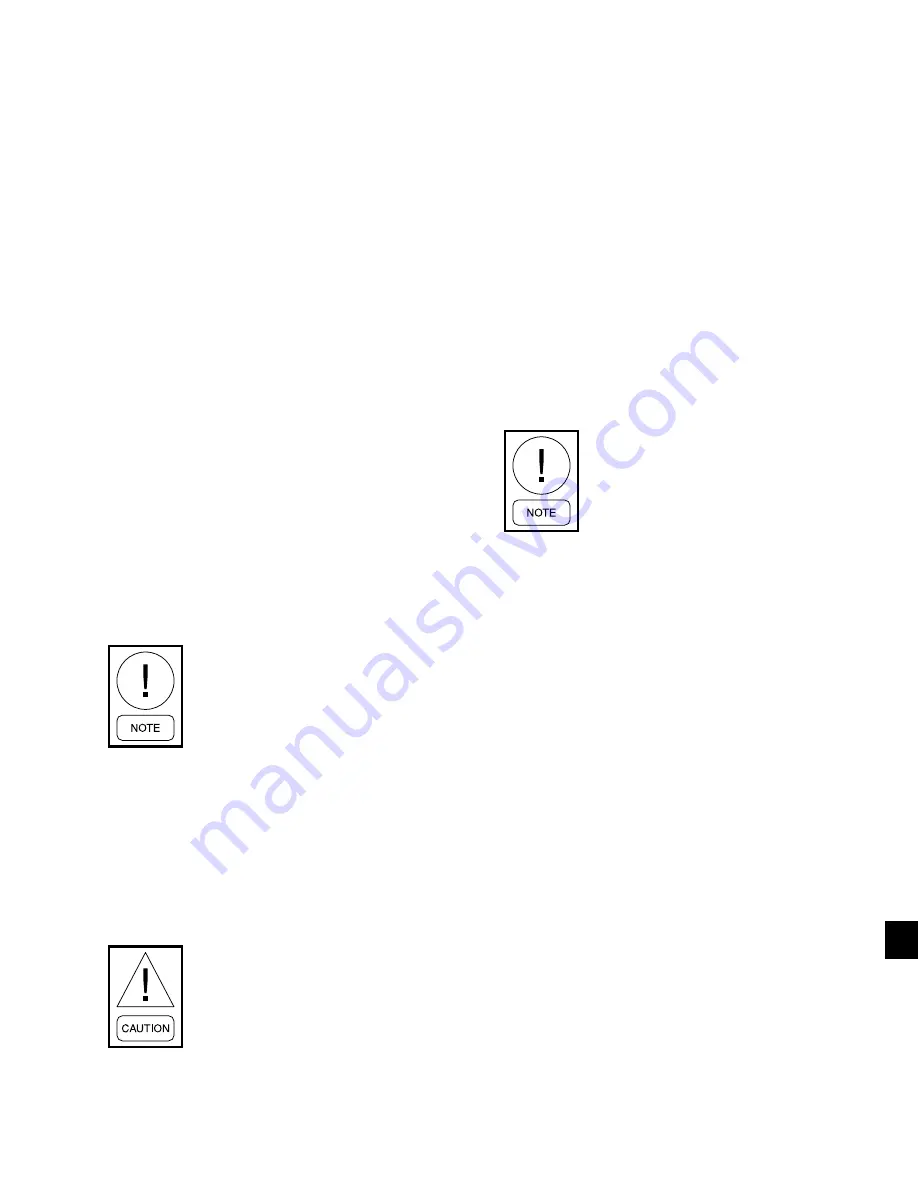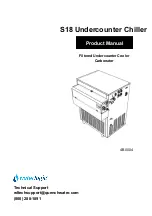
Johnson Controls
199
Form 150.72-ICOM6
Issue date: 12/19/2023
10
Section 10: Maintenance
It is the responsibility of the equipment owner to per-
form maintenance on the system.
Important
If system failure occurs due to improper maintenance
during the warranty period, Johnson Controls will not
be liable for costs incurred to return the system to sat-
isfactory operation. The following is intended only as
a guide and covers only the chiller unit components. It
does not cover other related system components which
may or may not be furnished by Johnson Controls.
System components should be maintained according to
the individual manufacture’s recommendations as their
operation will affect the operation of the chiller.
Compressors
Oil level check
The oil level can only be tested when the compressor
is running in stabilized conditions, to ensure that there
is no liquid refrigerant in the lower shell of the com-
pressor. When the compressor is running at stabilized
conditions, the oil level must be between 1/4 and 3/4 in
the oil sight glass.
At shutdown, it is acceptable if the
oil level falls to the bottom limit of the oil sight glass.
Use YORK “V” oil 011-00949-000, when
adding oil to Copeland compressor. The
Bitzer compressor uses 011-00982-000 oil.
Oil analysis
The oil used in these compressors is pale yellow in
color (POE oil). If the oil color darkens or exhibits a
change in color, this may be an indication of contami-
nants in the refrigerant system. If this occurs, an oil
sample should be taken and analyzed. If contaminants
are present, clean the system to prevent compressor
failure.
Never use the scroll compressor to pump
the refrigerant system down into a vacu-
um. Doing so will cause internal arcing
of the compressor motor which will result
in failure of compressor.
Condenser fan motors
Condenser fan motors are permanently lubricated and
require no maintenance.
Condenser round tube coils
Ensure dirt does not accumulate on the condenser coil
surfaces. Clean as often as necessary to keep the coils
clean.
Condenser MCHX
Ensure dirt does not accumulate on the MCHX
condenser surfaces. Clean as often as necessary to
keep the coils clean.
Exercise care when cleaning the MCHX
so that the fins are not damaged.
Microchannel coil cleaning
Regular cleaning is an essential part of maintaining the
integrity and heat transfer properties of heat exchang-
ers. Failure to follow cleaning guidelines can result in
heat exchanger damage, including leaks or loss of per-
formance. The cleaning procedures described in this
section are required to maintain the warranty of the
condenser coils.
Microchannel coils tend to accumulate less dirt inside
the coils than on the surface, which makes them easier
to clean than conventional round tube and fin coils.
The reduced depth and parallel tube layout of micro-
channel heat exchangers minimize the restriction of
cleaning water through the heat exchanger. This pro-
vides a shorter and more direct path for cleaning water
to effectively carry away dirt and debris during regular
maintenance. During the cleaning process, take care to
avoid damage to the coils and the protective coatings.
Adhere to the following care points during cleaning:
• Do not
use high-pressure water, such as a pres-
sure washer, to clean the coils. High-pressure wa-
ter can damage the fins and the protective coatings
on the coil.










































